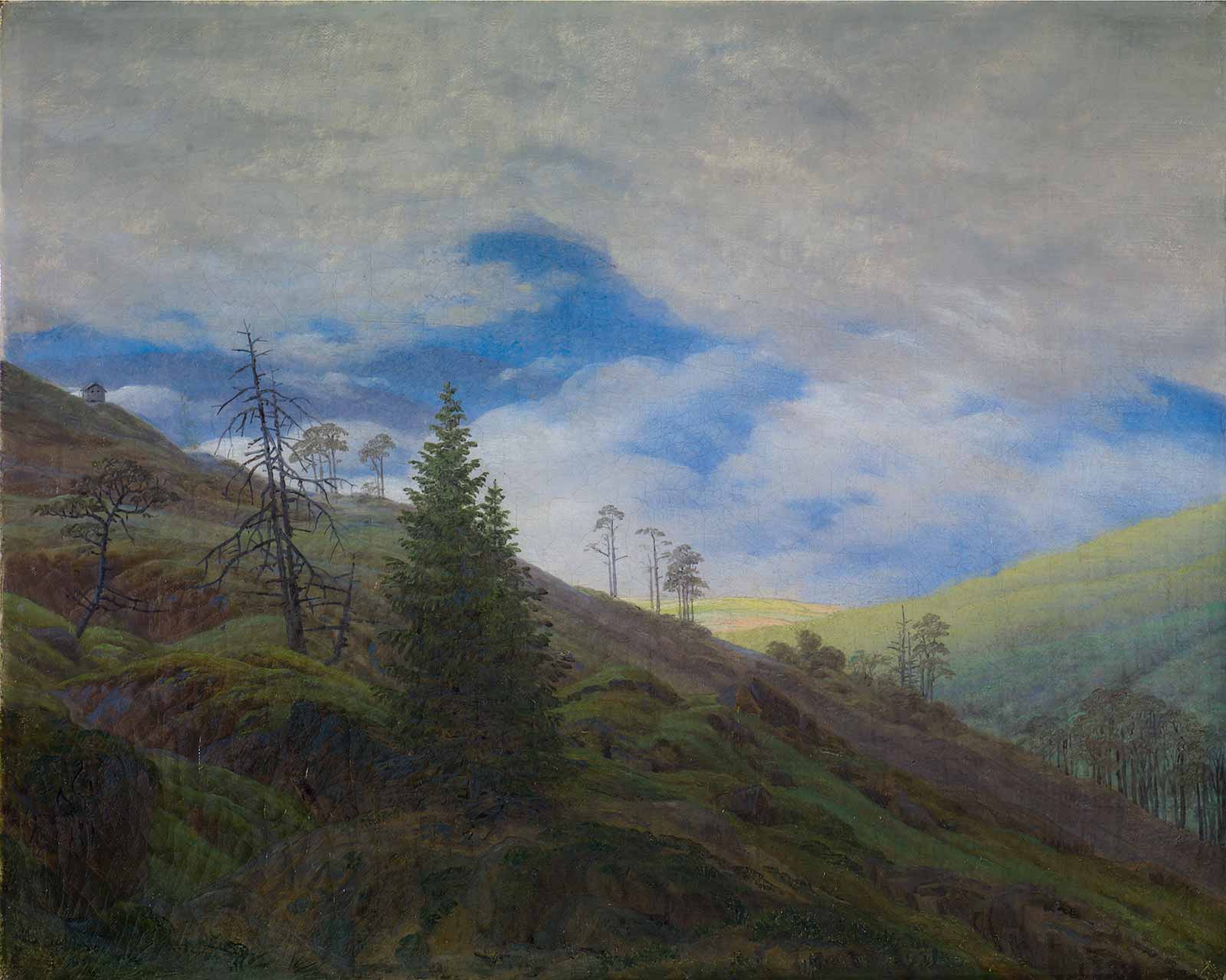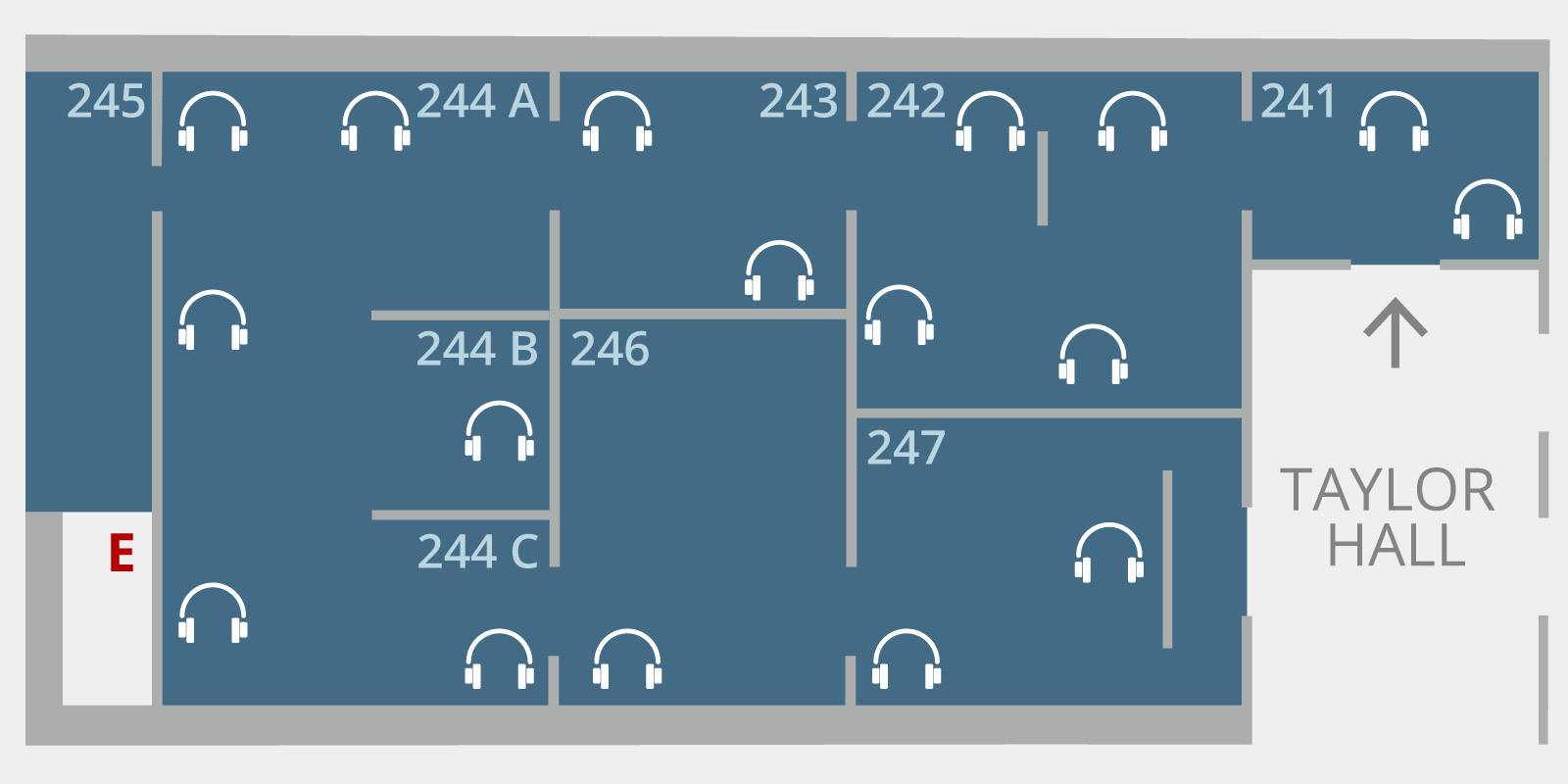Installation view of Storm of Progress: German Art After 1800 from the Saint Louis Art Museum
This audio guide includes a general introduction and 16 commentaries on the Saint Louis Art Museum’s collection of German art. For the first time, eight narrators from the Museum examine a full range of modern and contemporary art from 1800 to the early 2000s.
-
Access and Assistance
Free Public Wi-Fi
The Saint Louis Art Museum offers free Wi-Fi to visitors. From your device, access the SLAM_GUEST network.
Large Print Labels
Large-print labels are available on your own device and upon request at the Taylor Hall Welcome Desk.
AUDIO GUIDE TRANSCRIPT
The audio guide transcript is available to view on your own device.

Sunburst in the Riesengebirge, 1835
Caspar David Friedrich
- Transcript
Speaker: Simon Kelly
Curator of Modern and Contemporary Art
Saint Louis Art MuseumHello, I’m Simon Kelly, curator of modern and contemporary art at the Saint Louis Art Museum. The picture that you are looking at, Sunburst in the Riesengebirge, is by Caspar David Friedrich, the leading painter in the German Romantic movement, which flourished in the early decades of the 19th century. Romanticism was a complex historical movement. One of its most important elements was the new significance that it gave to landscape painting, since it emphasized the individual’s subjective and emotional response to nature. Friedrich’s picture dramatically captures a mountain landscape as sun breaks through the stormy clouds and illuminates the distant hills. Another expanse of bluish peaks is visible at back left, while a tiny hut at top left suggests a human presence. Friedrich evokes the effects of changing weather conditions as if he had painted this work outdoors. Yet the development of this picture is in fact more complex and arguably more interesting. Friedrich’s painting is a work of memory made 25 years after he visited the Riesengebirge Mountains on a hiking trip in 1810. These mountains, also known as the Giant Mountains, today border the Czech Republic and Poland, and they were close to the town of Dresden in southern Germany, where Friedrich spent most of his life.
Although his work is ostensibly naturalistic, Friedrich developed a personal language of symbolism in his painting that is clearly evident in Sunburst in the Riesengebirge. The fir in the foreground thus symbolizes vitality, while the dead tree alongside is a reminder of human mortality. The sunburst of light in the distance represents the hope for eternity, a hope that was central to Friedrich, who was a deeply religious man and saw landscape painting as a way of expressing his Christian beliefs. This picture gains extra poignancy when we understand that Friedrich knew his health was failing at this time. In 1835, indeed, he suffered a stroke, which largely curtailed his painting production. This is probably one of his last pictures.
Sunburst in the Riesengebirge is a recent purchase by the Museum and fills a long-standing gap in the Museum’s collection. Friedrich’s works are rare, and there are only four other paintings by the artist in American museums. His work is all the more important for our collection since it had a deep impact on later generations of German artists right up until the present day. Perhaps most notably, Gerhard Richter has often acknowledged the inspiration that he has drawn from Friedrich’s work.
- Gallery Text
Caspar David Friedrich
German, 1774–1840Sunburst in the Riesengebirge, 1835
oil on canvasSunlight bursts over distant hills as a blue sky dispels gathering storm clouds. The hut at top left shows a human presence within this vast landscape. Caspar David Friedrich based this scene on the Riesengebirge, a mountain range between the present-day Czech Republic and Poland, which Friedrich hiked 25 years earlier in 1810. Elements of the landscape held strong symbolism for Friedrich and his audience. The fir tree represented life and vitality; the dead tree, mortality; and the illuminated hills, an aspiration toward the promise of eternity.
Friends Fund, Museum Purchase, Director’s Discretionary Fund, the Ann Goddard Trust, and the Third Wednesday Group 1:2019
Credits
Caspar David Friedrich, German, 1774–1840; Sunburst in the Riesengebirge, 1835; oil on canvas; 10 x 12 1/2 inches; Saint Louis Art Museum, Friends Fund, Museum Purchase, Director's Discretionary Fund, the Ann Goddard Trust, and the Third Wednesday Group 1:2019
